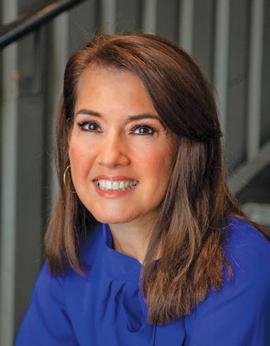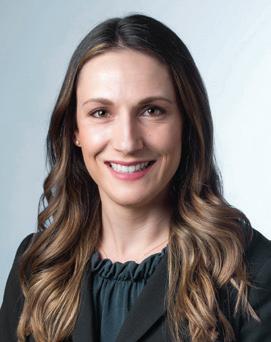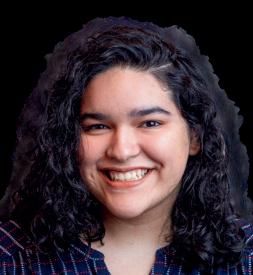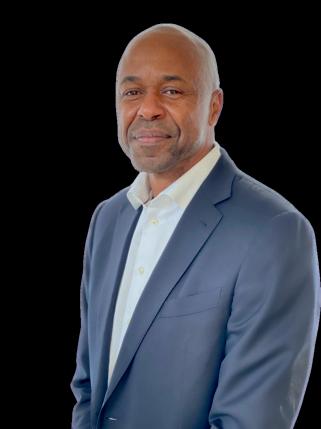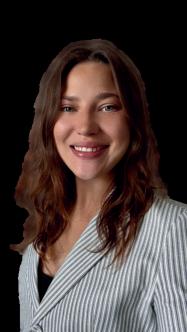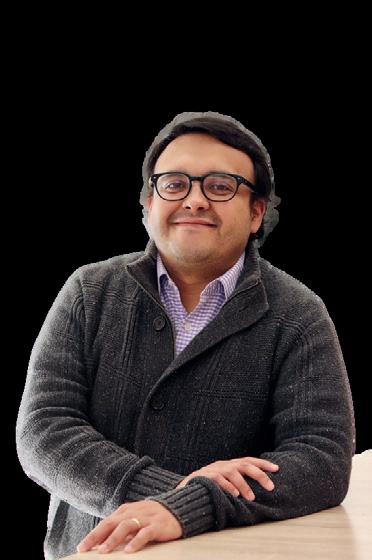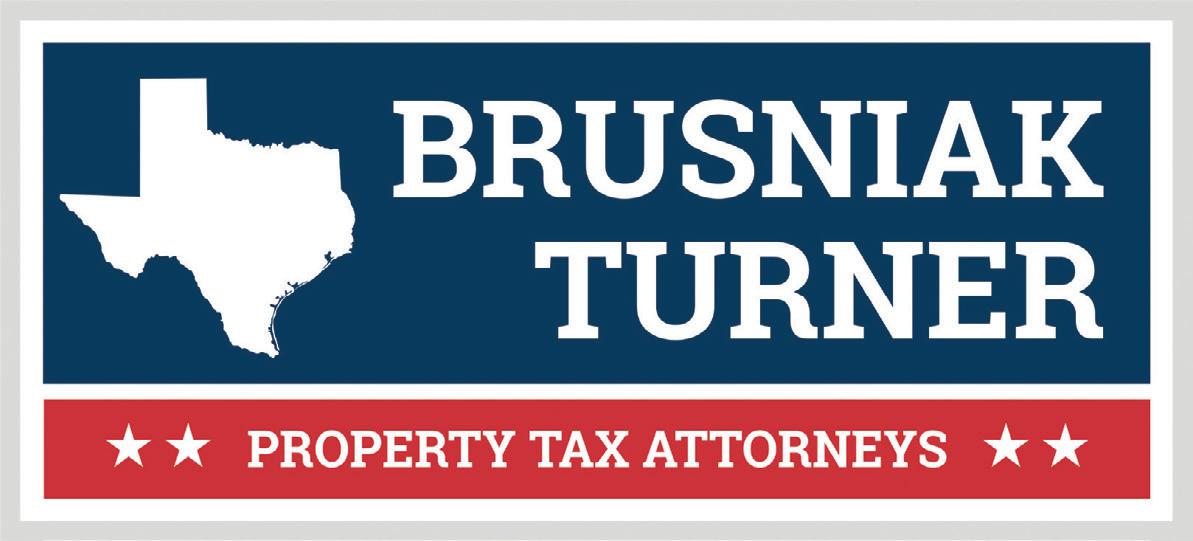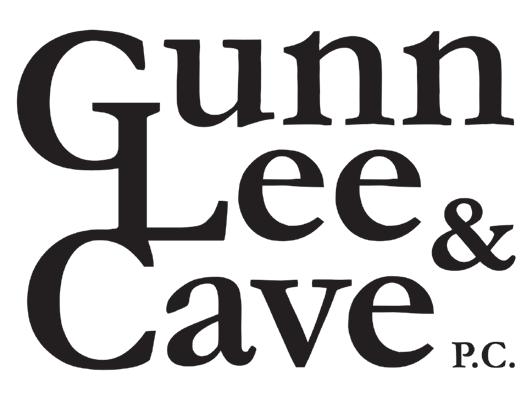

Honorable Leading the County Clerk’s Office into the Future



Honorable Leading the County Clerk’s Office into the Future
Member Benefit Provider
Trusted by 50,000 law firms, LawPay is a simple, secure solution that allows you to easily accept credit and eCheck payments online, in person, or through your favorite practice management tools.








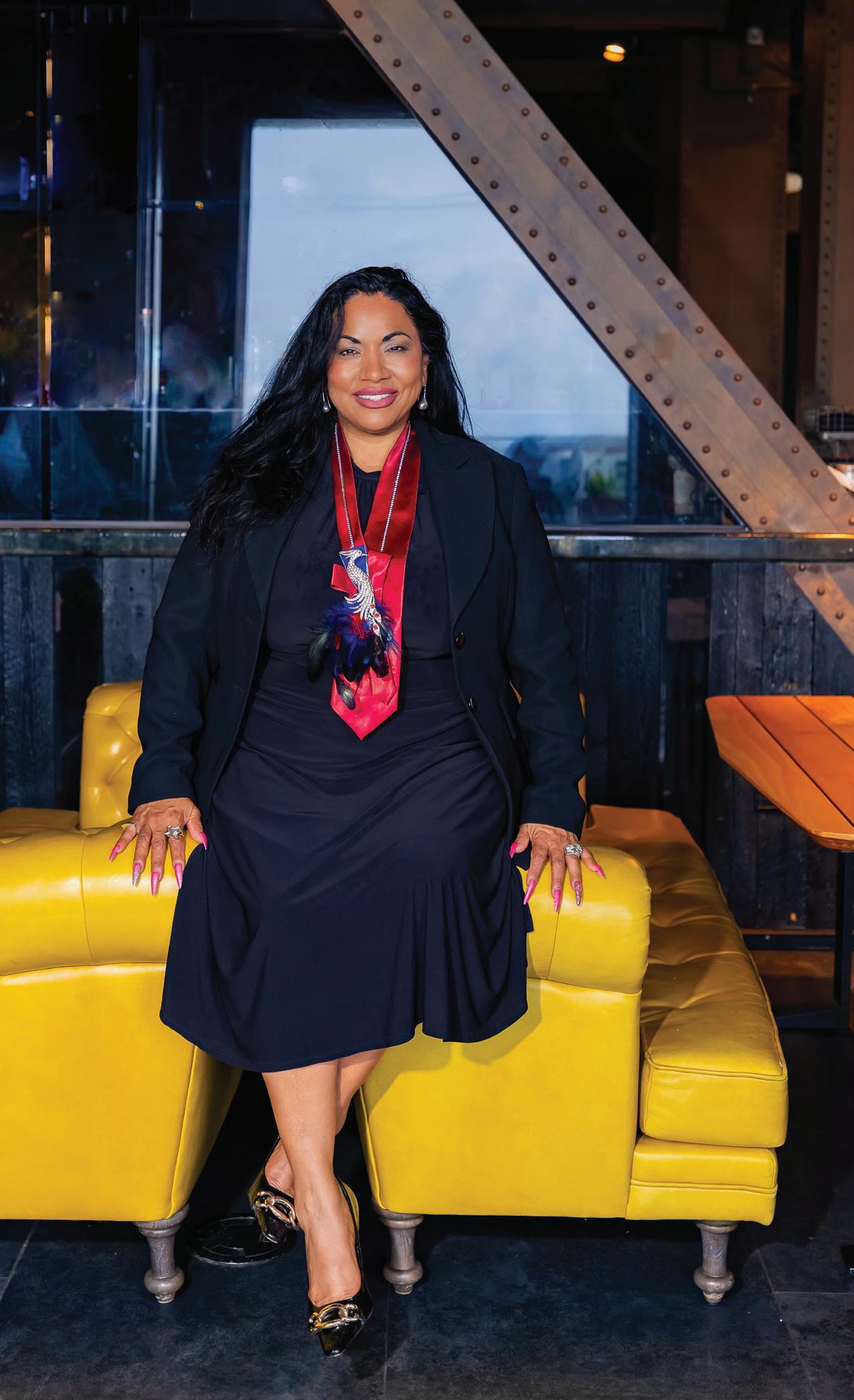
The Honorable Lucy Adame-Clark Leading the County Clerk’s Office into the Future
14 The Texas Business Court, Part III: Learning the Texas Business Court Rules By the Hon. Marialyn Barnard and Andrea Morris
Trial of O.J. Simpson: Part 1—The Crime By Mark J. Phillips and Aryn Z. Phillips 24 Understanding Immigration, Part IV: Preparing for Immigration Matters in 2025: A Guide for Practitioners By Ruby L. Powers and Carrie Nguyen
Soledad Valenciano, Jeffrie Lewis, and Sabrina Salazar



“His
“One
“Lots
“Works

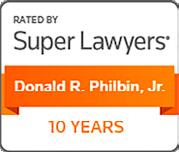



San Antonio Lawyer® is published bimonthly. Copyright ©2025 San Antonio Bar Association. All rights reserved. Republication of San Antonio Lawyer content, in whole or in part, is prohibited without the express written permission of the San Antonio Bar Association. Please contact Editor in Chief Sara Murray regarding republication permission.
Views expressed in San Antonio Lawyer are those of the authors and do not necessarily reflect the views of the San Antonio Bar Association. Publication of an advertisement does not imply endorsement of any product or service. San Antonio Lawyer, the San Antonio Bar Association, and the Publisher reserve the right to edit all materials and assume no responsibility for accuracy, errors, or omissions. San Antonio Lawyer and the Publisher do not knowingly accept false or misleading advertisements or editorials, and do not assume any responsibility should such advertising or editorials appear.
Contributions to San Antonio Lawyer are welcome, but the right is reserved to select materials to be published. Please send all correspondence to info@sabar.org
Advertising Inquiries:
Monarch Media & Consulting, Inc.
Archives of San Antonio Lawyer are available at sabar.org. Send address changes to the San Antonio Bar Association.
Chellie Thompson 512.293.9277 chellie@monarchmediainc.com
Publication Design and Production: Monarch Media & Consulting, Inc.
Editor in Chief Sara Murray
Articles Editor Natalie Wilson
Departments Editor Leslie Sara Hyman
Editor in Chief Emerita
Hon. Barbara Nellermoe
Monarch Media & Consulting, Inc. 512.293.9277 | monarchmediainc.com
Design Direction Andrea Exter Design Sabrina Blackwell
Advertising Sales Chellie Thompson
Sara Murray, Chair
Pat H. Autry, Vice-Chair
Barry Beer
Amy E. Bitter
Paul T. Curl
Michael Curry
Shannon Greenan
Stephen H. Gordon
Leslie Sara Hyman
Lauren Miller
Curt Moy
Hon. Barbara Nellermoe
Steve Peirce
Regina Stone-Harris
ileta! Sumner
Natalie Wilson
Ex Officio
Patricia “Patty” Rouse Vargas
For advertising information, contact:
Chellie Thompson, Monarch Media & Consulting, Inc. chellie@monarchmediainc.com
President
Patrica “Patty”
Rouse Vargas
President-Elect
Nick Guinn
Treasurer
Jaime Vasquez
Secretary
Emma Cano
Immediate Past President
Steve Chiscano
126 E. Nueva, 3rd Floor, San Antonio, Texas 78204 210.227.8822 | sabar.org
Directors (2023-2025)
Kacy Cigarroa
Melissa Morales Fletcher
Elizabeth “Liz” Provencio
Krishna Reddy
Directors (2024-2026)
Jorge Herrera
Abel Martinez
Cynthia Orr
Kristal Thomson
Executive Director
June Moynihan
State
Lawrence Morales,
Steve Chiscano
Association of
Christian Legal Society
Defense
Federal
Mexican-American
San
San
San
San
TEX-ABOTA, American
William

Sunday, June 1
12:30 pm - 5:00 pm

Be a “Big Dill” and support the San Antonio Bar Foundation’s mission to provide Civic Education, Scholarship and Pro-Bono services to our community. 5215 UTSA Boulevard SATX, 78249
Scan the QR code or visit sabar.org/2025pickleball to register or sponsor!

By Rachel Lynch

Bexar County elected its first County Clerk in 1836. One hundred and seventy-eight years later, the County elected its first woman and first Latina as County Clerk—Lucy Adame-Clark. Since taking office in 2019, Adame-Clark has focused on moving forward. In her first term, she spearheaded thirtyfive initiatives to modernize the County Clerk’s office. She continues the modernization effort in her second term.
The County Clerk serves as the County’s record-keeper, treasurer, and license administrator. As record-keeper, the County Clerk maintains the County’s current documents, includng county court civil and criminal records. The County Clerk oversees the County’s three probate courts, fifteen County Courts at Law, a Mental Health Court, and an Auxiliary Jail Court. The County Clerk serves as Ex-Officio Clerk of Commissioners Court, Bexar County Recorder, and Bexar County Records Management Officer, and maintains Bexar County’s Spanish Archives. In addition, the County Clerk maintains public records—like property ownership, doing-business-as (DBA) names, and marriage licenses—and manages the recording of cattle brands.
The County’s public records include historical records. According to Adame-Clark, Bexar County “has a precious history in our records.” She explained that nearly 200 years ago, Bexar County encompassed all of what is now Texas, as well as parts of modern-day Oklahoma, Kansas, New Mexico, Colorado, and Wyoming. As a result, the County’s historical records include “a lot of Canary Islanders history, the Tejano history, Native American history, Black history, German settlement history, and Italian settlement history.” The County’s oldest historical record dates back to 1717, predating Bexar County.
The County’s historical records contain information regarding genealogy, land rights, and events in Texas history. One 1818 document reflects the enslavement of some Latinos. Because she committed to sharing the County’s history, Adame-Clark arranged for the document’s inclusion in an exhibit for National Hispanic Heritage Month. According to District Judge Stephanie Boyd, the County’s historical records have helped “bring light to a lot of the Black history here in San Antonio.” Copies of documents from Bexar County’s Spanish Archives are now displayed at the San Antonio African American Museum.
In the past, most county records were on paper. Adame-Clark explained that when she took office in 2019, the County Clerk’s budget included “$6,600 every three months for paper.” Because attorneys, clerks, and judges operated with paper, accessing the County Clerk’s records required physical trips to the courthouse or other storage facilities. Millions of public records were stored in a sub-basement of the county courthouse; another 175 boxes of records were stored in the criminal courts. Records were often difficult to find. Although many court records were digitized when Adame-Clark took office, not all public records were. So, she set out to digitize County records to increase accessibility and protect documents from destruction during a disaster. Adame-Clark and her staff worked to digitize every document in the Clerk’s care. County Judge Peter Sakai, who has known AdameClark for years, “marveled at how she has transformed the County Clerk’s office.” Judge Sakai characterized Adame-Clark as “prolific in her approach to expanding services and getting out in the community to meet people where they are.”




Adame-Clark’s ability to meet people where they are and her passion for increased accessibility flow from her childhood. She was born in the Alazán-Apache Courts—San Antonio’s oldest public housing project— and grew up in nearby Cassiano Courts (or Cassiano Homes)—another public housing complex—with her four sisters, one of whom was born with an intellectual and developmental disability (IDD). Adame-Clark recalls how she and her family waited in lines “for shoes and for food,” and how much she appreciated those resources.
Adame-Clark’s father (a former Marine) and her mother (a community organizer) made sure she and her sisters knew that coming from an underserved community did not mean they could not go on to great things. “Past the walls of this poor community, there are so many opportunities,” Adame-Clark’s mother told her. Her parents encouraged her to dream big and taught her to advocate for, and give back to, the community. Adame-Clark remembers her mother blockwalking and petitioning local government for improvements like sidewalks, better pay for teachers, and better access to education.
Adame-Clark sees her position as County Clerk as an opportunity to help underserved communities. Her “Records on the Run” initiative takes County Clerk services to underserved communities using a mobile satellite office. The initiative originated from an early town hall meeting with veterans. At the meeting, a veteran asked, “How are we supposed to get to you?” Although non-judicial documents were free online, many veterans needed in-person services from the County Clerk’s office. Inperson services required trips downtown, money for parking, and metal detectors which might trigger PTSD. Adame-Clark began to consider
other groups needing access to County Clerk services: senior citizens, people with little or no internet access, people without printers, people without transportation or $20 for parking. As an idea began to take shape, Adame-Clark responded, “We’re going to mobilize.”
Adame-Clark recalled with a laugh, “My staff looked at me like I was crazy!” But her deputy chief, Priscilla Hernandez, headed to her office and began planning. “She came back thirty minutes later, opened my door, and said, ‘Boss, we can do it.’”
Within seven months, Adame-Clark and her staff opened four “Office in the Box” pop-up stations and set them up at senior centers and veterans’ locations in different precincts. The “Office in the Box” stations were an instant success, “doing everything the courthouse can do, out in the community.” People visited the pop-up stations to deposit wills, record military discharge forms, and obtain marriage licenses. The project cost only $26,000.
The second part of Adame-Clark’s plan required a truck “for business continuity, for more access to the public, and for disaster recovery.” Five months after “Office in the Box” launched, the COVID-19 pandemic began, and the need for a truck soared. Small businesses needed DBAs to qualify for certain loans. People needed marriage licenses to access medical and life insurance policies. Others needed to deposit wills. Homes were sold, loans refinanced, guardianships created, and all that information needed recording. The County Clerk’s office purchased a truck and set up a traveling office.
Unlike the pop-up stations, which needed electrical outlets, the truck could function as an outdoor County Clerk’s office. “We popped up on the east side, the west side, the south side, across the street [from the County Courthouse], and we had two to four hour waits,” said AdameClark. She and her staff worked tirelessly to serve the community. At
times, they loaded the truck with personal protective equipment and distributed it throughout the community. Adame-Clark, who is an ordained Christian minister, even performed marriages during COVID. She charged no fee; instead, she asked couples to donate to the Battered Women and Children’s Shelter or the Family Justice Center.
Post-COVID, the County Clerk’s mobile office evolved into the “Records on the Run” van, which provides the community in-person services at no additional cost. Services include obtaining marriage and DBA licenses, recording property ownership, and accessing information from the Spanish Archives. Judge Boyd admires how “Records on the Run” removes barriers to accessing public services.
Adame-Clark’s efforts as County Clerk have roots in her work for the Bexar County Sheriff’s Office. Adame-Clark began working at the Sheriff’s Office in 1997 as Clerk I, after completing training in Paralegal Studies at Southern Careers Institute. Six months later, she was promoted to Clerk II and began handling identity theft, error resolution, and fingerprint corrections. Adame-Clark took to the work immediately and “wanted to learn so much more.” She attended training throughout Texas, obtaining extensive knowledge of criminal justice information systems.
Over time, Adame-Clark worked in Criminal Warrants, processing felony and misdemeanor warrants, and in Central Records, handling Bexar County’s incarceration records. Through this work, Adame-Clark learned about the roles of the County and District Clerks and the importance of record-keeping. While in Central Records, Adame-Clark was part of a team that transitioned paper fingerprints to the Automated





At Broadway Bank Private Banking, we provide you a single point of contact, available seven days a week. Your banker listens to your personal and professional goals to create custom strategies that feel just right. Come see what it’s like to bank in your own backyard.

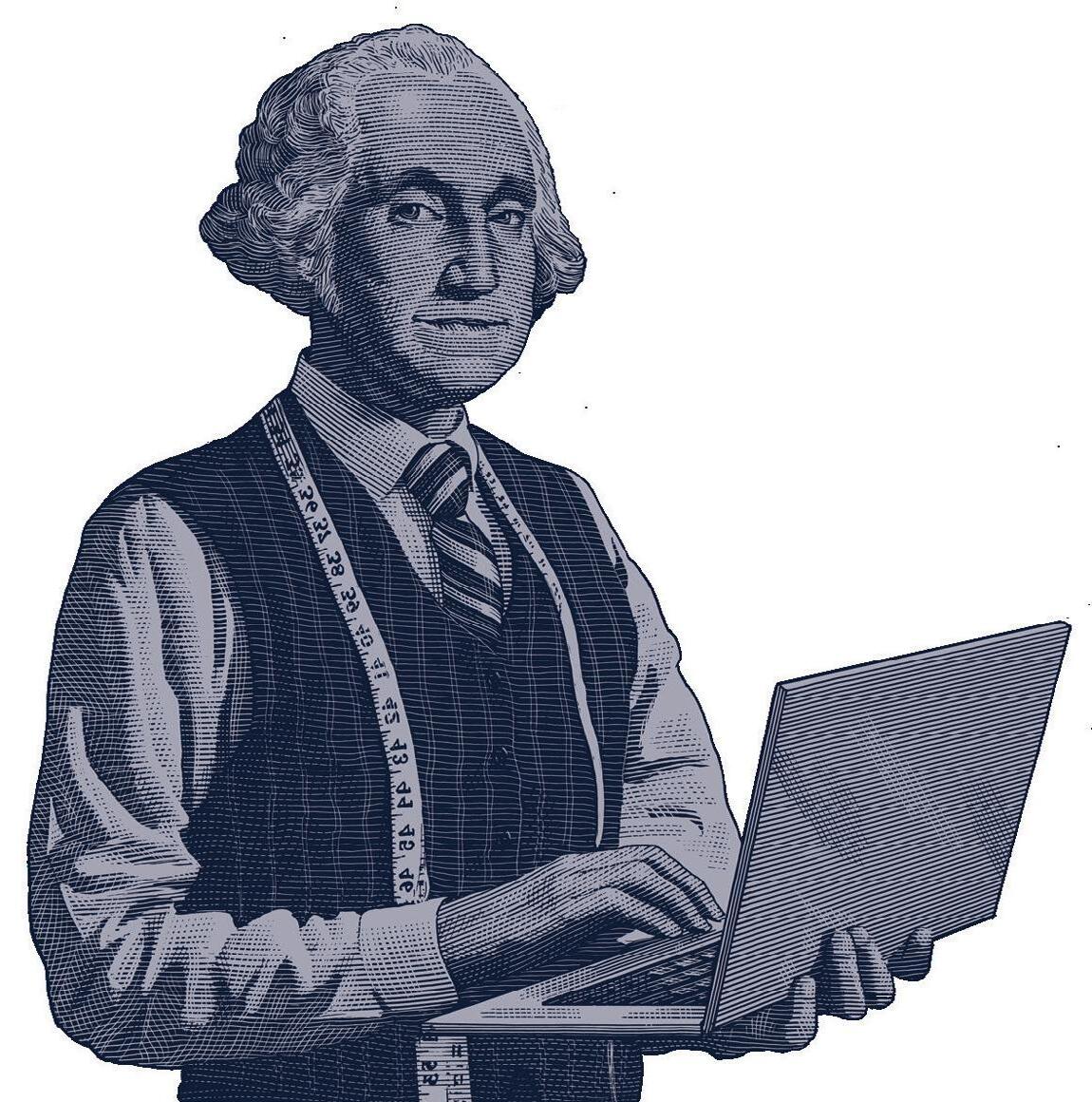
Fingerprint Identification System—a system that can share information with other agencies quickly, without the risk of losing physical fingerprint cards.
In Criminal Investigations, Adame-Clark handled a case involving the sexual assault of a two-year-old girl. The case proceeded through the system slowly. According to Adame-Clark, by the time the case went to trial, the girl had “to be told what happened to her.” The delay of justice made a big impression on Adame-Clark: “I wanted to get a position where [I could] automate systems that were responsible. To make sure we digitized those records . . . tied into every court system, every process, everything the attorney needed, prosecutor needed, the district attorney needed, the clerks needed. I wanted to be part of that improvement.” She promised, “I will make sure justice is never delayed for anybody.” Adame-Clark left the Sheriff’s Office on December 31, 2018 (after winning the November election) and was sworn into the County Clerk’s office on January 1, 2019.
Once elected as County Clerk, AdameClark asked Commissioners Court for the same automation system as the District Clerk and District Attorney. By that time, the Dallas and Tarrant County Clerks had automated systems. Acting with those counties’ guidance, Bexar County began transitioning from a forty-year-old Mocha system to Tyler Odyssey—an automation system that connects data, applications, and offices to make business processes more efficient. In 2021, civil records began transitioning; in 2024, criminal records began transitioning. The transition to Odyssey digitized files and automated processes for registered and authorized users like employees of the County Clerk’s office, Texas-licensed attorneys, and justice partners such as the Attorney General and Medical Examiner. After facing some technical issues and delays with the transition, Odyssey is now “fully functional” and capable of helping the County Clerk’s office upload and scan images, obtain judges’ signatures, access court information 24/7, and streamline proceedings in the county court system.



Although Commissioners Court approved the transition to Odyssey, universal use by county judges proved difficult. “Some of the judges were very resistant,” Adame-Clark admits. “It’s [still] not a full process across all the courts.” She says she may eventually begin more strictly enforcing Odyssey’s use but hopes all judges will transition to the new operating system without having to be pushed. Once the effort is complete, AdameClark plans to file with the Texas Law Library to make the County’s digital record the official public record, rather than the manual files.
Despite her desire to update office processes, Adame-Clark respects past County Clerks, especially immediate predecessor Gerry Rickhoff. Adame-Clark retained much of Rickhoff’s staff, wanting a team of “people who have institutional knowledge, but still have passion and dedication and want to improve this office.” She promoted several mid-level employees to higher positions, knowing that the guidance of Rickhoff’s “subject matter experts” would help achieve her goals as County Clerk.
Rickhoff himself was “instrumental” in Adame-Clark’s transition. “I’m not here to destroy his history or his credibility,” Adame-Clark said of Rickhoff. “I’m here to improve the criminal justice information system.” Before Adame-Clark took office, the two met several times to talk about the transition, and they “exchanged keys very peacefully, respectfully, with dignity.”
Adame-Clark’s respect for the past is evident as soon as you step into her office. In the entry vestibule/waiting area of the County Clerk’s office, Adame-Clark dedicated a wall for framed photos of past Bexar County Clerks. There are ten photos, arranged in three rows of County Clerks from 1921 to present. Nine photos are black and white; these are all former County Clerks, and all, notably, white men. In the center of the top row of photos, in full color, is Adame-Clark. A final frame reflects the signatures of the ten County Clerks who served from 1837 to 1920 (photos not yet located). The display highlights both AdameClark’s desire to honor the past and her proud awareness that she is different from prior County Clerks. Adame-Clark represents a different demographic (and generation) than the past officeholders, and her work to modernize the Clerk’s office reflects this.
The display of the past continues into Adame-Clark’s personal office. Adame-Clark’s office is a magnificent, eclectic, overwhelmingbut-organized collection of things that show who she is. Every surface–walls, shelves, tables–is decorated. Adame-Clark’s degrees are displayed alongside historical photos of the County Courthouse, paintings, and a flag of the former Mexican State of Coahuila and Texas. There are shelves of law books, Texas history books, political books, interspersed with small figurines, pottery, crosses, and framed family photos. There are multiple Texas and American flags. There is a red leather couch, under which lay several pairs of high heels. Hanging on a coat rack near the door are a white hard hat and a multicolored Fiesta flower crown. There are several knights: two large knights guard either side of a table near the door, while a smaller one resides on top of a bookshelf (next to a certificate of ordination). Adame-Clark tells me that the knights are protectors and remind her to be strong and stay grounded. The top of a large cabinet behind AdameClark’s desk is lined with Native American dolls and figurines. AdameClark has Native American, Black, and Latina lineage, and there are representations of each of these aspects of her personal history around her office, along with mementos from her work history, including a framed certificate of appreciation for twenty-five years of service to Bexar County.
The certificate should read “a lifetime of service.” Since her childhood in the housing projects, Adame-Clark has served her community. Judge Boyd characterizes Adame-Clark as having been raised to “always be active in bettering a community,” adding that—from a very young age—Adame-Clark would actively write to the legislature, campaign with City Council members, and blockwalk with her mom and dad. Apart from her work at the clerk’s office, Adame-Clark works for her community by donating time and money. She works to help senior citizens, advocates for children’s literacy, and does all she can to improve living conditions in poor neighborhoods. She was instrumental in establishing a permanent food pantry for the South Side School District.
Since her childhood in the housing projects, Adame-Clark has served her community. Judge Boyd characterizes Adame-Clark as having been raised to “always be active in bettering a community,” adding that—from a very young age—Adame-Clark would actively write to the legislature, campaign with City Council members, and blockwalk with her mom and dad.

Your IT Solutions Experts who can help with:
• HIPPA Compliance (TX HB300 applies)
• Cloud: storage, files, computers, servers
• Computers: repairs, upgrades, purchases, encryption
• Servers: setup, repairs, maintenance, purchases
• Email: domains, migration, backup, encryption
• Office 365: email, OneDrive, backup and Office software
• VoIP phones: includes Quality of Service (QoS) and backup internet
• Network: devices, setup, repairs, maintenance
• Call when you need us or customized service options available
• Remote and on-site support, antivirus programs, virus removal, maintenance www.pstus.com • 210-385-4287 support@pstus.com
Mention this ad and receive 20% off your first invoice.
She supports organizations like Women Unlimited San Antonio, which educates, empowers, and guides women business owners; Zapatos, which provides shoes for needy children; and Eagles Flight Advocacy and Outreach, which supports families and children, especially those with disabilities.
Eagles Flight and Zapatos are particularly close to her heart. Growing up in the 70s and 80s was difficult for Adame-Clark’s sister with an IDD. Lack of information on intellectual and developmental disabilities meant few resources, so Adame-Clark works with Eagle’s Flight to ensure that people with IDDs today do not struggle in the same way her sister did. Organizations like Zapatos provided shoes to Adame-Clark as a child. The first time she volunteered with Zapatos, she sat down,

helped children pick out and put on new shoes, and experienced a full circle moment: “It was me, remembering when they used to come do the same thing for me.” She had made her way to the opportunities her parents had always assured her were waiting, and she had returned to underserved communities to provide those opportunities to others.
Like her years of community organizing, the work Adame-Clark has done at the County Clerk’s office is about serving the people of San Antonio. “I don’t need credit,” she stated. She is happy to empower her community from behind the scenes. Although she has not sought recognition or accolades, her work has caught people’s attention. Adame-Clark and the County Clerk’s office have received numerous awards since 2020. Most recently, Adame-Clark received the National Coalition of 100 Black Women’s Legendary Advocate Award and the San Antonio Young Lawyers Association’s Liberty Bell Award. Both awards celebrate community engagement.
Lucy Adame-Clark is an advocate, a trailblazer, and an innovator. She is a tireless worker and a stellar example to young women who want to make a difference. She is a record-keeper and warrior for justice. Above all, she is a member of the Bexar County community, and she is doing everything she can to make the system that serves that community work better for everyone.

Rachel Lynch is a graduate of Sarah Lawrence College. She was born and raised in San Antonio.
Change waits for no one. Don’t sit back. Work with


Saturday, September 20, 2025
Rosenberg Sky Room | UIW | 847 E. Hildebrand

SABA Lifetime Achievement Award
Ted Lee
SABF Outstanding Lawyer in Community Service
Andy Segovia
SABF Peacemaker
Dwayne Robinson
Incoming President
Nick Guinn
SAYLA Outstanding Young Lawyer Chris Mazzola
SAYLA Liberty Bell Jacquelyn Callanen
SAYLA Outstanding Mentor The Honorable Patricia Alvarez
Outgoing President Patricia Rouse Vargas


In addition to what kinds of suits the Texas Business Court hears (which was covered in this publication’s last installment), we are often asked what rules of practice govern the court. Like the Texas District Courts, the Business Court follows the Texas Rules of Civil Procedure. Specifically, Rules 354 to 359 of the Texas Rules of Civil Procedure govern practicing before the Business Court. These rules cover a variety of topics, such as the court’s authority and venue; removal, remand, and transfer procedures; appearing remotely before the court; and the court’s authority to issue written opinions.
Like U.S. District Court? Not exactly. Like Texas District Court? Sort of.
It is particularly worth noting that several of the rules governing the Business Court resemble federal practice. As highlighted in the last installment, the removal and remand procedures share many similarities with those of the federal court. See Tex. R. Civ. P. 355. Additionally, like a U.S. District Court, the Business Court issues written opinions for certain rulings, such as dispositive rulings upon a party’s request or other rulings important to the jurisprudence of the state. See id. R. 360. In fact, many of the court’s initial opinions largely concerned whether the court could hear cases that had commenced before September 1, 2024. Each division analyzed the plain language of House Bill 19 and concluded that the court did not have authority to hear such cases. On February 21, 2025, the Fifteenth Court of Appeals agreed, holding that civil actions filed before September 1, 2024, in state District Court could not be removed to the Business Court after that date. See In re ETC Field Servs., LLC, No. 15-24-00131-CV, 2025 WL 582320 (Tex. App.—15th Dist., Feb. 21, 2025, orig. proceeding).
In its first 100 days, the Business Court adopted local rules. These rules apply uniformly to all the divisions and can be found on the court’s website at https://www.txcourts.gov/about-texas-courts/business-court/. See BCLR 1. The rules set out that the court is “dedicated to the fair, efficient, and timely resolution of business disputes,” and thus is focused on streamlining the resolution of disputes. See id. Parties are encouraged to familiarize themselves with the court’s website and rules, which include detailed requirements for motion practice; proposed scheduling orders and corporate disclosure obligations; word limits and formatting requirements for motions; and prerequisites to requesting emergency relief.
By the Hon. Marialyn Barnard and Andrea Morris

“You have to learn the rules of the game. And then you have to play better than anyone else.”
—ALBERT EINSTEIN
Below are some of the rules litigants may find informative. These highlights touch on some of the significant differences between practicing in state District Court and the Business Court. In fact, federal practitioners may find themselves familiar with several of these rules.
• BCLR 2: Assignment, Severance, and Consolidation: Parties should be aware that the Business Court judges may exchange benches, allowing them to sit and act for each other in any matter pending before the court. This means that much like a visiting judge, a Business Court judge from one division may sit on a case for another judge in another division. In such cases, the re-assigned judge makes every effort to hear matters either remotely or in person in the designated division without requiring the parties to travel beyond their original division.
• BCLR 3: Case Information Sheet: Much like many state District Courts, the Business Court requires a party to file a Business Court Information Sheet concurrently with any filing that initiates a new case. A case information sheet form can be found on the court’s website.
• BCLR 4: Case Management and Discovery: Similar to federal practice, every case is governed by a scheduling order. The court requires parties to confer and jointly file a proposed scheduling order within a specified amount of time, depending on how the case was initiated in the court. The court also requires each party to file a

“Know how to win by following the rules.”
—ARNOLD PALMER
The Fourth Division does not have additional rules of practice. However, litigants should be aware that some of the divisions have additional preferences and guidelines governing their division. A copy of each division’s procedures can be found on the court’s website. Litigants should also be aware that the court’s opinions can be found on the court’s website, and copies of orders can be found on re:SearchTX.
Although procedural rules can be seen as tedious, the goal of the Business Court is to provide an attractive court for business litigants to efficiently resolve their business disputes. As such, the court’s rules of practice aim to streamline the litigation process, and the court encourages business litigants to make use of this specialized court.
corporate-disclosure statement with the proposed scheduling order. Finally, this rule outlines a prerequisite to filing discovery motions, which requires a party to file a letter summarizing the nature of a discovery dispute with an explanation of the attempts made to resolve or narrow the dispute before filing a discovery motion. Such letters and responses must not exceed 700 words.
• BCLR 5: Motions: This rule outlines the specific word limits the court has for different types of motions. The main document along with any appendices should be filed in as few separate PDFs as possible, and all motions should be accompanied by a proposed order as well as a certificate of conference.
• BCLR 7: Emergency Relief: Parties seeking emergency relief should notify the Business Court Clerk as soon as possible. The Clerk’s contact information can be found on the court’s website. The court also asks applicants to file, within a specified timeframe, a certificate stating either the grounds supporting a request for ex parte relief or setting forth the date, time, and manner of notice to opposing parties.


The Hon. Marialyn Barnard currently serves on the Fourth Division of the Texas Business Court. Previously, she served as a justice on the Fourth Court of Appeals, as a county commissioner for Bexar County Commissioners Court, and as judge of the 73rd Judicial District Court in Bexar County.
Andrea Morris is a staff attorney for Judge Marialyn Barnard. She previously served as Judge Barnard’s staff attorney during her tenure at the Fourth Court of Appeals.


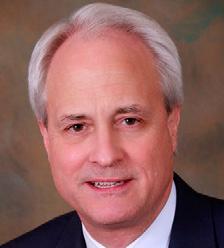
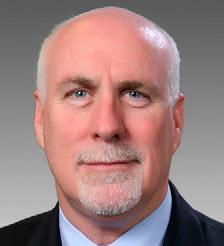
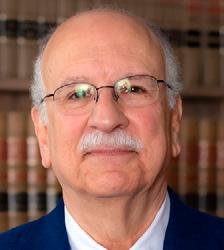

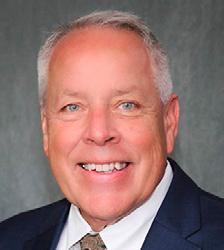
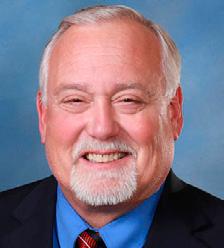
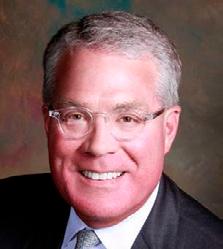
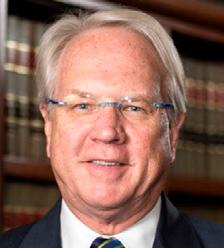


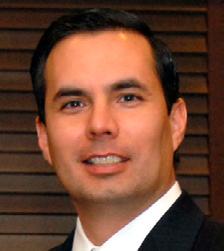

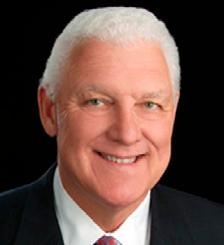

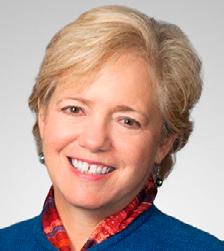
By Mark J. Phillips and Aryn Z. Phillips

If you are old enough to be reading this, you likely experienced firsthand the trial of O.J. Simpson for the murder of his ex-wife, Nicole Brown Simpson, and her friend, Ronald Lyle Goldman. More than any other in the twentieth century, the trial of O.J. Simpson was the quintessential “trial of the century.” It was covered to saturation by both the electronic and print press, and avidly followed by consumers of spectacle, both in America and abroad. No trial before or since has captured the minds and passions of so many Americans or sparked so much media attention.
That is partially because O.J. Simpson was the most famous American celebrity to be charged with murder in three generations. Celebrity victims, certainly, and even notorious criminals, but not since the trial of Roscoe “Fatty” Arbuckle for the murder of actress Virginia Rappe in 1921, had an American of Simpson’s popularity and stature been charged with murder. Also contributing to the coverage was the fear and fascination Americans have with race relations, as the trial was that of an African American for the murder of his Caucasian ex-wife and her Jewish friend, surrounded by the aura of potentially racist
white policemen allegedly driven to frame him for a murder he did not commit, with guilt determined by a predominantly female black jury. And overriding all was the fact that television reporting had come of age in the 1990s, matured from its grainy youth of the 1960s. More than one station carried every moment of the nine-month trial from gavel to gavel, and every other television network, newspaper and news magazine covered the story daily.
Simpson was born on July 9, 1947, in San Francisco, the son of working-class parents who separated when he was five. He grew up
in the housing projects of the Potrero Hill neighborhood, where as a teenager he ran with a fast crowd and was briefly incarcerated at the San Francisco Youth Guidance Center. After recovering from rickets, which caused him to wear braces on his legs as a youth, Simpson excelled in athletics in high school and at City College of San Francisco, and was eventually awarded an athletics scholarship to USC, where he played running back for the Trojans in 1967 and 1968. He set rushing records and won numerous awards, including college football’s most prestigious honor, the Heisman Trophy.
In 1969, he was drafted by the Buffalo Bills in the first round. He struggled early with the poorly performing Bills, but eventually had breakout years from 1972 to 1976, winning the NFL rushing title four times. He played in six Pro Bowls and is the only player in NFL history to rush for over 2,000 yards in a 14-game season. He was elected to the Football Hall of Fame in 1985, his first year of eligibility.
As his professional football career wound down, Simpson smoothly moved to a career in acting in the late 1970s, starring in several major films, including The Towering Inferno in 1974, Capricorn One in 1978, and The Naked Gun trilogy between 1988 and 1994. He appeared as a commentator for Monday Night Football, and his fame and popularity led to numerous endorsements, including that of spokesman for the Hertz rental car company, in whose commercials he sprinted through airports like a running back, dodging obstacles and leaping over suitcases. He was more than a popular football player; he was a personality. At 6'1", 210 pounds, and classically handsome, he was “OJ,” and he was instantly recognized wherever he went. He thrived on the attention, stopping to sign autographs for anyone who asked.
Simpson met the blond and beautiful Nicole Brown in 1977 at a Beverly Hills nightclub where she worked as a waitress. She was then eighteen years old and just three weeks out of high school. Born on May 19, 1959, in West Germany, Nicole moved as a toddler with her German mother and correspondent father, Juditha and Lou Brown, to Southern California, where she was raised with three sisters.
It was immediately evident that her relationship with Simpson would be stormy. Coming home from her first date with him, Nicole’s roommate expressed shock to see her jeans ripped open, the result of Simpson’s impatience to make love. “No, wait,” she explained. “I like him.”1

No trial before or since has captured the minds and passions of so many Americans or sparked so much media attention.

Fixin’ to | definition: means “About to” or “preparing to”. As in, we’re fixin’ to make you a part of the family.
We know Texas. Since 1979, we’ve been protecting Texas lawyers, across all Texas jurisdictions, in all areas of practice through our member-owned insurance exchange. Our members are our family. And, we want our family to be successful. We share our knowledge and the wealth (yes, literally, we share our profits annually).
Fixin’ to join us? Apply today.
We help Texas attorneys succeed.
We called Attorneys First Insurance to compete for our renewing lawyers professional liability insurance. Thru their guidance they saved us over $1000 on our renewal premium. - Law Office of Tom Dougherty, Tyler Texas
Our specialization allows us to offer legal professionals better coverage at rates substantially lower rates than most competitors.
Call (866) 977-6720 or email sam@attorneysfirst.com for a fast & friendly quote.
At the time, Simpson was still married to his first wife, Marguerite, and he was the father of two children, Arnelle and Jason. Marguerite was pregnant with a third child, Aaren, born September 24, 1977. In August of 1979, Aaren drowned in the family’s swimming pool. Their marriage already troubled, Simpson and Marguerite were divorced that same year.
After many years of dating, Simpson and Nicole were married in February of 1985. Their first child, Sydney, was born in October, and a second child, Justin, was born in August of 1988. But Simpson’s marriage to Nicole was no easier than his first. Physical and mercurial, Simpson was unquestionably abusive to Nicole, and police were called at least nine times to break up domestic disputes. He beat her and threw her into walls. On February 25, 1992, after seven years of marriage, she filed for divorce.
• Experienced, having conducted more than 25,000 mediations since 1989 with more than 850 years’ experience practicing law
• Committed to the mediation process and devoted to the ethical practice of law
• Covered by the AAM Member Insurance Group Policy, an arbitrator and mediator professional liability insurance
Appellate Bankruptcy Business/Commercial Civil Rights Condemnation
Construction Consumer Education Employment & Labor Entertainment
Family Farm & Ranch Health Care Insurance Intellectual Property International Medical Oil & Gas Personal Injury Professional Liability Real Estate Securities Taxation Title Insurance Wills, Trusts & Estates
For more information, contact the local San Antonio Chapter. www.attorney-mediators.org/SanAntonioChapter Gary Javore - gary@jcjclaw.com
Patricia O. Alvarez
888.413.6630
patricia@alvarezdr.com
Michael J. Black
210.823.6814
mblack@burnsandblack.com
Paul Bowers
713.907.7680 paul@ptbfirm.com
John K. Boyce, III
210.736.2224 jkbiii@boyceadr.com
Leslie Byrd
210.229.3460 leslie.byrd@bracewell.com
Kevin Chaney
210.889.4479
kevin@kevinchaneylaw.com
Debbie Cotton
210.338.1034 info@cottonlawfirm.net
Aric J. Garza
210.225.2961
aric@sabusinessattorney.com
Charles Hanor
210.829.2002 chanor@hanor.com
Gary Javore
210.733.6235 gary@jcjclaw.com
Recommended by Judges and Attorneys
Alex Katzman
210.979.7300 alex@katzmanandkatzman.com
Daniel Kustoff 210.614.9444 dkustoff@salegal.com
J.K. Leonard 210.445.8817 jk@jkladr.com
Cheryl McMullan, Emeritus 210.824.8120 attyelder@aol.com
Dan Naranjo 210.710.4198 dan@naranjolaw.com
Patricia Oviatt 210.250.6013 poviatt@clarkhill.com
Jamie Patterson
210.828.2058 jamie@braychappell.com
Diego J. Peña 817.575.9854 diego@thepenalawgroup.com
Don Philbin
210.212.7100 don.philbin@adrtoolbox.com
Edward Pina 210.614.6400 epina@arielhouse.com
Elizabeth “Sissy” Preston 713.412.1458 epreston@advmediation.com
Richard L. Reed, Sr. 210.953.0172 rick.reed@steptoe-johnson.com
Wade Shelton 210.219.6300 wadebshelton@gmail.com
Richard Sparr 210.828.6500 rsparr@sparrlaw.net
John Specia 210.734.7092 jspecia@macwlaw.com
Phylis Speedlin 210.405.4149 phylis@justicespeedlin.com
Lisa Tatum 210.249.2981 ltatum@tatum-law.com
James Upton 361.884.0616 jupton@umhlaw.com
Two years later, shortly after 10:00 p.m. on June 12, 1994, Nicole and Ron Goldman were murdered outside Nicole’s condo on Bundy Drive in the affluent Brentwood neighborhood of Los Angeles, just a few blocks from Simpson’s Rockingham Avenue estate. Hollywood could not have devised a crime scene with greater drama, a killing more savage. They were not coolly gunned down from a distance, as hundreds are every year in gang-torn parts of Los Angeles, but butchered; they were furiously slashed and stabbed multiple times. A veteran LAPD detective, one of the first officers to arrive at the scene, said “It was the bloodiest crime scene I have ever seen.”2 Nicole and Ron were found in pools of blood. Barefoot and wearing a loose shirt, Nicole lay curled up at the foot of the stairs outside her front door, stabbed seven times in her neck and head. She was apparently face down when the murderer put a foot in her back, pulled her head up by her hair, and nearly decapitated her with a fatal slash from left to right across her neck, which severed her carotid arteries and left jugular vein, and nicked her spine. Ron was stabbed thirty times all over his body. Both victims had defensive wounds to their hands, incurred trying to ward off the assault.
The evidence against Simpson was initially overwhelming. His long history of physical violence against Nicole included a conviction in 1989 for spousal abuse. Photographs surfaced of a bruised and battered Nicole from prior altercations with Simpson. Police responded to her 911 calls, and she warned them that she feared Simpson would kill her. At the crime scene, five drops of blood led away from the bodies, four of which were on the left side of bloody size 12 shoe prints, indicating that the
assailant was injured on the left side of his body. Simpson wore size 12 shoes, and the next day police observed him wearing a bandage over a deep cut to the middle finger of his left hand. Preliminary tests on all five blood drops at the crime scene matched Simpson, and Nicole’s and Ron’s blood was found in Simpson’s car, and more of his blood was found on the driveway of his home.
And while he could account for most of his time that day, he had no alibi for the hour in which the murders took place. Twenty-four-year-old limo driver Allan Park was waiting outside Simpson’s gated Rockingham residence at 10:22 that night to take him to the airport for a planned flight to Chicago, but no one answered several rings at the gate. At 11:00 p.m. Park saw a figure matching Simpson arrive at the residence and enter the front door. Park rang again and this time Simpson answered, telling him that he had overslept and just gotten out of the shower. “I’ll be down in a minute,” Simpson told the driver. 3
Shortly thereafter, Simpson’s luggage was loaded into the limo and Park drove him to the airport for an 11:45 p.m. flight to Chicago.
Alerted by her barking dogs, neighbors discovered the bodies of Nicole and Ron just after midnight, and a small army of police converged on the crime scene, stringing bright yellow tape and conducting an examination of the condo and its grounds. Photos were taken, measurements made, and various items packaged and marked for evidence.4
The first investigators on the scene were Los Angeles Police Department detectives from the West LA division, Ron Phillips and Mark Fuhrman, who arrived together at 2:10 a.m. Patrol officer Robert Riske met them and reported his findings, then walked them along the perimeters of the scene and through the garage into the condo, where they could survey the bodies from the top of the three steps at the open door of Nicole’s residence. Fuhrman later testified that he could see the bodies, bloody heel prints leading away from them, and a discarded knit cap and a leather glove. Shortly thereafter, Phillips and Fuhrman were advised that the case was being taken over by the elite Robbery/Homicide division and told to take no further action.
The Robbery/Homicide detective in charge was Philip “Dutch” Vannatter, a veteran of twenty-five years with the Los Angeles Police Department, and an experienced and wellrespected homicide investigator. Silver-haired, fit and tough talking, Vannatter was known among his colleagues as a “super cop.” His prior cases included the arrest in 1977 of film

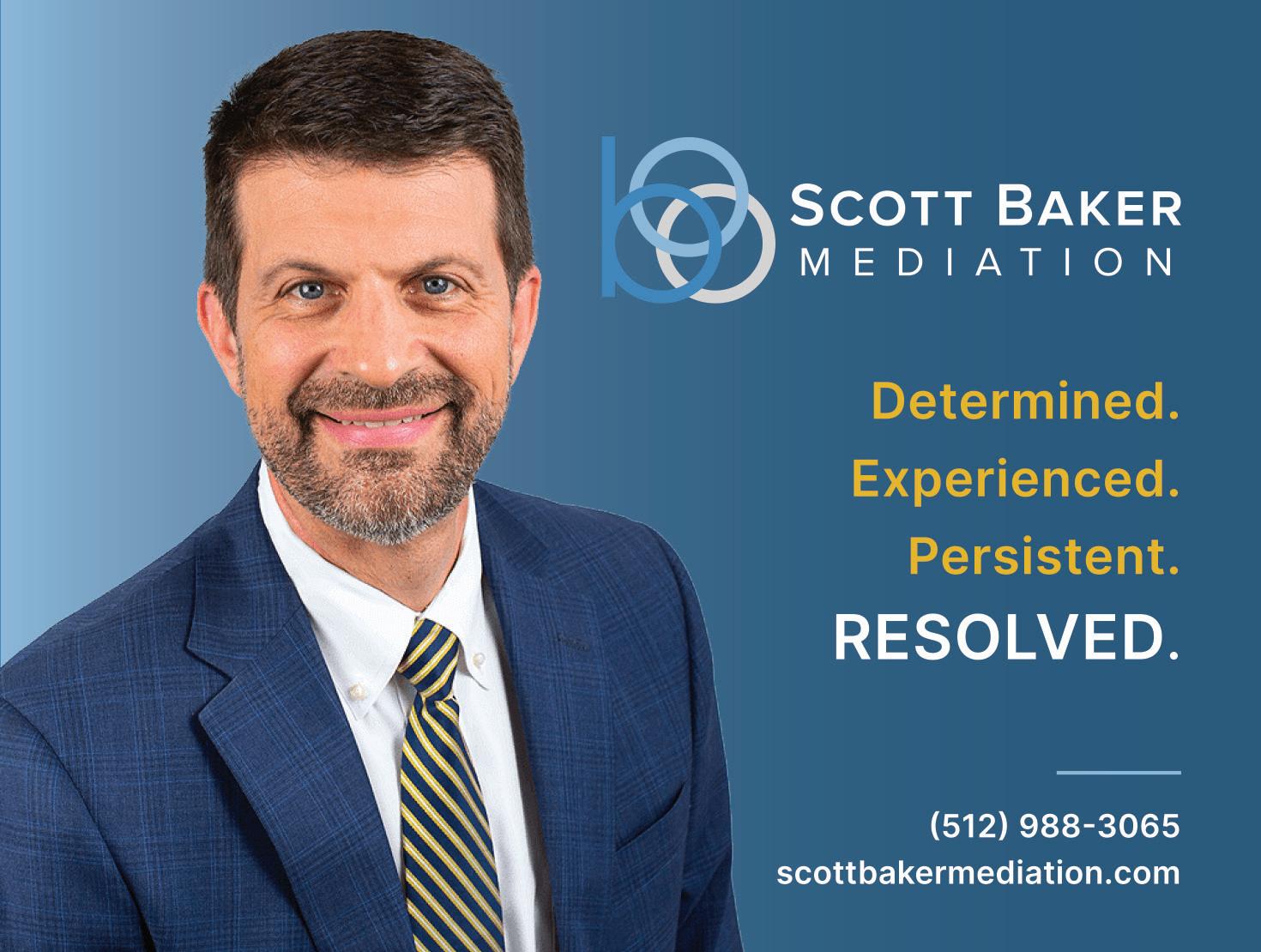
director Roman Polanski, husband of Manson victim Sharon Tate, on charges of unlawful sex with Samantha Geimer, the model of a fashion shoot and then just thirteen years old. Vannatter arrived at the Bundy condo at 4:00 a.m., followed by his partner, Tom Lange, a few minutes later. After inspecting the scene and collecting information, including Simpson’s prior history of battery against Nicole, he drove to Simpson’s nearby Rockingham residence, arriving at approximately 5:00 a.m. He was accompanied by detectives Lange and Phillips. Fuhrman, still on the scene two and half hours after being told that he was no longer on the case, volunteered to drive. Vannatter later testified that Simpson was not then a suspect, and that they only went to advise him of the death of his ex-wife.
Simpson’s white Bronco was parked outside the gated drive, but the detectives were unable to reach anyone inside the house by intercom or telephone. After Fuhrman told the other detectives that he had seen blood on the door of the Bronco, but without a warrant, Vannatter instructed Fuhrman to scale the wall and open the gate.
Vannatter and his fellow detectives knocked on the front door without response, then walked around the north side of the house to a row of guest quarters. In the first, they roused house guest Brian Kaelin, who told them that Simpson was not home, but that his daughter, Arnelle, was staying in the adjoining guest residence. Fuhrman stayed with Kaelin while the other three detectives went to wake Arnelle. With her assistance, they gained admission to the main house and were able to contact Simpson in Chicago by phone. 5
Brian “Kato” Kaelin was a thirty-fiveyear-old bit actor and radio show host from Wisconsin. In response to the detective’s questioning, he told Fuhrman that the white Bronco belonged to Simpson, who left the
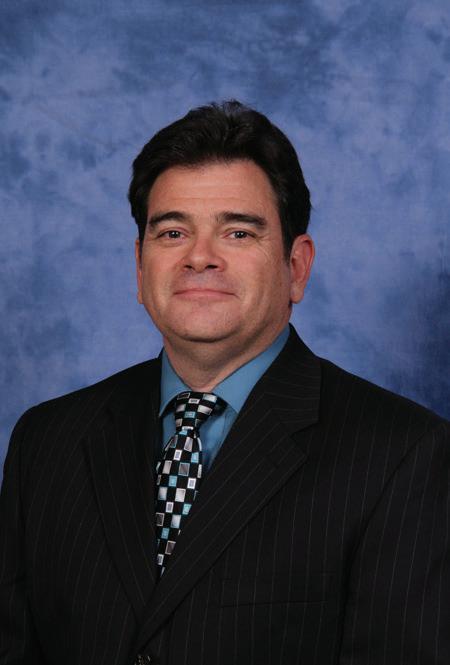
night before by limousine. After being asked if anything unusual had happened during the night, Kaelin described how, at about 10:45, he heard three loud bangs against the outside wall of his guest house, an area that formed a narrow space between the back of the row of guest houses and the perimeter wall of the property. A “cracking,” he called it, and he thought it might have been an earthquake.6 Fuhrman went to investigate. A few minutes later, he returned to inform his fellow detectives that he discovered a right-hand leather glove, still wet and sticky with blood, in the small space. It matched the left-hand glove found at the Bundy Drive murder scene.
The sun now shining light on the property, Vannatter and the detectives observed drops of blood in the driveway that led from the parked Bronco to the front door of the main residence, as well as more drops inside the residence. Vannatter declared the Rockingham residence an extension of the crime scene and left to get a search warrant.7
Contacted in Chicago early that Monday morning after the murders, Simpson immediately returned to Los Angeles. Accompanied by his attorney, Howard Weitzman, Simpson was interviewed by detectives at Parker Center, the downtown headquarters of the Los Angeles Police Department. The detectives read Simpson his Miranda rights and briefly handcuffed him, but he was not arrested. In the thirty-minute taped interview, Simpson did not confess to the murders, but he was vague about his whereabouts the evening before, and he could not recall how he cut his hand. “I have no idea, man,” he told the detectives.8 He allowed his blood to be taken for sampling and his injured left hand to be photographed.
Late on Thursday, June 16, initial tests on the blood drops found at the murder scene proved a match to Simpson, and the next day the LAPD notified lawyer Robert Shapiro,
Digital Forensics/Cell Tower Geolocation Mapping Cell Phone Records Analysis for MVAs
Licensed Texas Private Investigator (A15633)
Retired Federal Agent (AFOSI)
Court Certified Expert Witness (Federal/State/Military) (210) 271-2999
Titan Building 2700 NE Loop 410, Ste. 301, San Antonio, TX 78217
www.WhatsOnThePhone.com
The Proof is in the Data™
who had taken over the representation of Simpson, that they were ready to charge and arrest his client. Shapiro negotiated a delay until 11:00 a.m. for Simpson to voluntarily turn himself in. That morning, Simpson was at the home of friend and lawyer Robert Kardashian, where he had been staying since his return from Chicago. With him was Al Cowlings, who knew Simpson since their high school days in San Francisco and played football with him for USC and the Buffalo Bills. The two friends left the Kardashian residence in the late morning in Cowlings’ matching white Ford Bronco, but when Simpson did not appear at Parker Center, police announced an all-points bulletin that lasted the day.
Six hours later, Simpson and Cowlings were located by tracking their cell phone use to a freeway some eighty miles south in Orange County, near the cemetery where Nicole had been buried just the day before. What followed was the now famous two-hour slow speed chase at thirty-five miles per hour along Los Angeles freeways back to Simpson’s home in Brentwood, a media event viewed by millions of people both in the United States and abroad. Television coverage of the event shows spectators pulling over on the freeway and leaving the safety of their vehicles to watch and wave as the procession went by, while thousands of others were lining overpasses to witness the spectacle of Cowling’s Bronco trailed by a string of squad cars. Some held up crudely lettered signs in support of the football legend. More than a dozen helicopters followed overhead.
There is some question as to whether this behavior was suicide or flight. In Cowling’s car with Simpson was approximately $9,000 in cash, a gun, his passport, and all the makings of a disguise, including a fake goatee, moustache, glue and remover. Receipts found with the items show them to have been purchased in Burbank, California, on May 27, 1994, some two weeks before the murders of Ron and Nicole.9 But Cowlings told pursuing police that Simpson was threatening suicide, and photos taken at the time show Simpson in the car with the gun to his head. In telephone calls from the fleeing Bronco, Simpson said that he had been trying to get to Nicole’s grave to kill himself, and that he already said goodbye to his children.
That morning, he left with Kardashian a letter begun earlier but finished that day, with farewell sentiments to his family and friends, and all the hallmarks of a suicide note:
I can’t go on. No matter what the outcome, people will look and point. I can’t take that. I can’t subject my children to that. This way, they can move on and go on with their lives. . . . Don’t feel sorry for me, I’ve had a great life, great friends. Please think of the real O.J. and not this lost person. Thanks for making my life special. I hope I helped yours. Peace and love, O.J.
Back at the Rockingham estate, Simpson was allowed to call his mother, drink a glass of orange juice, and was then taken into custody.

Mark J. Phillips is a shareholder at the law offices of Lewitt Hackman in Encino, California. Aryn Z. Phillips is an Assistant Professor at the University of Illinois. They are the co-authors of Trials of the Century (Prometheus, 2016), from which this article is excerpted.
1People Magazine, February 20, 1995.
2Vincent Bugliosi, Outrage (New York: Norton & Company, 1996), p. 18.
3Clifford Linedecker, OJ A to Z (New York: St. Martin’s Griffin, 1995), p. 19.
4Linedecker, OJ A to Z, p. 63.
5Vannatter, Grand Jury Testimony, June 23, 1994.
6Fuhrman, Preliminary Hearing Testimony, July 5–6, 1994.
7Vannatter, Grand Jury Testimony, June 23, 1994.
8Simpson police interview, June 13, 1994.
9Bugliosi, Outrage, p. 98.


We represent property owners across the state impacted by eminent domain projects. Our experience, combined with our personable and trustworthy approach, has earned us a reputation as one of Texas’s premier eminent domain law firms. We are here to protect what’s yours.
Become One of Our Referral Partners
We have a proven track record of collaborating with law firms around the State of Texas on a variety of eminent domain matters.

By Justice H. Todd McCray
This court’s criminal appellate docket regularly includes cases briefed pursuant to Anders v. California, 386 U.S. 738 (1967), in which appellate counsel, appointed to represent indigent defendants, assert there are no arguable grounds for appeal. Anders and its progeny require this court to perform an independent review of those cases to determine whether any arguable appellate issues are present.
Recently we have identified several potential unraised issues relating to Article 42.15 of the Texas Code of Criminal Procedure. Article 42.15(a-1) specifies a trial court, during or immediately after imposing a sentence, must assess the defendant’s ability to pay fines and costs included in the sentence. See Tex. Code Crim. Proc. art 42.15(a-1). Article 42.15(a-2) mandates that this inquiry take place on the record—a requirement added in 2021. See Tex. Code Crim. Proc. art 42.15(a-2); Act of May 24, 2021, 87th Leg., R.S., Ch. 106 § 1, 2021 Tex. Gen. Laws 202.
In one representative example, Montejano v. State—where a defendant was convicted of evading arrest or detention while using a vehicle—the trial court sentenced the defendant to four years and six months of confinement and imposed court costs of $430, but failed to conduct an ability-to-pay inquiry on the record. No. 04-23-00079-CR, 2024 WL 1543286 *1 (Tex. App.—San Antonio April 10, 2024, no pet.) (mem. op., not designated for publication). Characterizing the absence of an on-the-record inquiry as an “arguable ground of appeal,” we remanded the matter for additional briefing to determine whether “reversible error [occurred] if the record does not show that the trial court conducted an inquiry on the record regarding the defendant’s ability to pay court costs.” Id. We observed we had “not found any mandatory authority on this question from the Court of Criminal
Appeals, and there [wa]s not yet a clear, well-established consensus among our sister courts.” Id. at *2; accord Almeida v. State, 702 S.W.3d 569, 572 (Tex. App.—San Antonio 2024, no pet.).
This issue remained unsettled until the Texas Court of Criminal Appeals’ September 2024 decision in Cruz v. State, 698 S.W.3d 265 (Tex. Crim. App. 2024). In Cruz, the defendant was found guilty of aggravated kidnapping in August 2021 and sentenced to thirty years in prison, a fine of $8,000, and $325 in court costs and fees. Id. at 26667. The judgment recited that the court had “conducted an inquiry into Defendant’s ability to pay” the fine, costs, and fees, but there was nothing else in the record demonstrating the inquiry had occurred. Id. at 267. There was also nothing in the record reflecting whether the defendant requested an inquiry or objected to a failure to conduct one on the record. Id
Drawing on its framework of errorpreservation rules from Marin v. State, 851 S.W.2d 275 (Tex. Crim. App. 1993), the Court of Criminal Appeals concluded an ability-to-pay inquiry is a category-three right—a forfeitable right that applies only when affirmatively invoked. See Cruz, 698 S.W.3d at 269.
Explaining this categorization, the court stated an ability-to-pay inquiry is “not fundamental to the adjudicatory system; it is a post-trial procedure that has nothing to do with adjudication; it does not ensure a jury, a fair trial, a correctly informed sentencing judge, or a defendant’s ability to understand the proceedings against him.” Id. The court also noted that the Texas Code of Criminal Procedure contains various post-trial means for addressing a defendant’s financial hardship, including Article 43.035(a)’s provision for a hardship hearing. Id. (citing Tex. Code Crim. Proc. art 43.035(a)). Accordingly, the court held Cruz had “forfeited his right to the inquiry by not objecting.” Id. at 270.
We subsequently applied the Cruz holding to Montejano, which had been re-briefed, and held Montejano waived his right to an abilityto-pay inquiry on the grounds that he failed to object when the trial court failed to address his ability to pay at sentencing. Montejano, No. 04-23-00079-CR, 2024 WL 4965686, at *2.
The Cruz court also determined that the right to have the ability-to-pay inquiry on the record is a category-three right—specifically noting that Article 42.15(a-2) provides that a defendant may waive the requirement but does not specify a formal waiver. See Cruz, 698 S.W.3d at 270 (citing Tex. Code Crim. Proc. art. 42.15(a-2)). Accordingly, moving forward, in order to preserve these issues for appeal, defendants must not only object to a failure to undertake an ability-to-pay inquiry, but also to the failure to make any such inquiry on the record.

Justice H. Todd McCray was elected to serve on the Fourth Court of Appeal in November 2024. Prior to the election, Justice McCray practiced in Texas trial and appeal courts for 34 years, including service as a prosecutor in both the Grayson County Attorney’s Office and the Bexar County District Attorney’s Office. Justice McCray obtained his B.B.A degree from the University of Texas at Austin and his Juris Doctor degree from St. Mary’s University School of Law. He was Board Certified in Criminal Law in 1997. Aron Cooper and John Fredland, staff attorneys for Justice McCray, assisted in the preparation of this article. Aron Cooper has been a staff attorney for Justice McCray since January 2025. He previously worked as a central staff attorney for the Fourth Court of Appeals. John Fredland has been a staff attorney for Justice McCray since February 2025. He retired from the United States Air Force Judge Advocate General’s Corps after 20 years of active-duty at the grade of lieutenant colonel.
Goranson Bain Ausley welcomes two partners to our expanding team in San Antonio.

OUR NEW PARTNERS [ L to R ]
Charla Davies, Kristal Thomson

Both Board Certified, Family Law Texas Board of Legal Specialization
When we grow in numbers, we grow in strengths. As the newest members of our team demonstrate: Charla Davies is a trusted advocate for high-asset clients, navigating complex divorces though Collaborative Law, litigation, or negotiation. She excels at protecting assets and achieving constructive outcomes. Kristal Thomson is known for managing high-stakes cases that involve significant estates and challenging child custody issues. Clients recognize her success in both litigation and negotiated settlements. With their addition and the opening of our seventh office, GBA continues to grow for the sake of our clients’ futures.
By Ruby L. Powers and Carrie Nguyen 2025
As we are facing new shifts in immigration policy, it is crucial to proactively assess how to best prepare for changes in the regulatory and enforcement landscape. This article aims to help attorneys anticipate and respond to these proposed policy shifts, particularly under Project 2025’s vision, which signals a stringent stance on immigration law.
Outlined below are insights and strategies for practitioners to equip themselves and their clients for a potentially more restrictive immigration environment:
Federal Agency Realignment: Under Project 2025, all federal immigration-related agencies would come directly under presidential control, with a restructured Department of Homeland Security (DHS) at its core. This would mean an unprecedented consolidation of enforcement powers, creating a potentially broader, centralized authority over border and immigration policies.
Implications for Practitioners: Attorneys should be prepared for an environment where agency autonomy is curtailed. Increased executive oversight may lead to more rapid implementation of restrictive policies without the same checks that traditionally exist. Attorneys should establish streamlined communication channels with clients to alert them to changes that may impact their cases. Additionally, practitioners may need to focus on filing applications or motions promptly, ensuring compliance with any new procedural requirements, and being prepared to address unexpected challenges arising from the intensified pace of policy rollouts.
Increased Deportations and Expedited Removals: Project 2025 envisions the “largest deportation program in American history” and seeks to expand expedited removals nationwide. We have already witnessed non-citizens face immediate removal (deportation) without any court proceedings and protective policies. Sensitive zones (churches, schools, courts, medical clinics/ hospitals) have traditionally been considered “safe spaces” where immigration enforcement did not go, but there is no more “safe space” as ICE has now stated they have access to go anywhere they want. The initiative also aims to strip immigration judges and the Office of the Principal Legal Advisor
(OPLA) of their discretion to terminate or administratively close cases in immigration court.
Preparation Strategy: Attorneys should prioritize preemptive defenses, advising clients on risks of removal, and advocating for any available relief before enforcement actions intensify. Given the restrictions on sensitive zones, practitioners may need to work closely with clients on contingency plans such as identifying safe locations, maintaining emergency contact information, and having essential documents ready at all times (e.g., proof of physical presence and legal filings). Additionally, practitioners should establish systems to ensure clients can access legal support, such as virtual “know your rights” presentations in areas where movement or accessibility may be restricted due to heightened enforcement.
TPS, U and T Visas, and Asylum Restrictions: The 2025 plan proposes ending Temporary Protected Status (TPS) and significantly restricting U and T visas, only allowing them in “heinous” cases. Asylum would also become more restrictive, barring gang violence and domestic violence as grounds for claims and eliminating group-based PSG (particular social group) claims.
Implications for Humanitarian Clients: With TPS potentially repealed, practitioners will need to assess alternative options for clients relying on humanitarian protections. For asylum seekers, it will be crucial to refocus cases on grounds other than Particular Social Group “PSG,” such as political opinion, religion, nationality, or race. Further, attorneys should familiarize themselves with any interim guidance or alternative humanitarian options.
Narrowing of Employment-Based Programs: Employment-based visas would focus exclusively on the “best and brightest” talent, doing away with H-1B visas as they are currently known. The Secretary will not use its existing discretionary authority to increase the number of H-2B (seasonal non-agricultural) visas above the statutorily set cap.
Action Plan for Employment Cases: Practitioners should expect stricter vetting and increased documentation requirements. For employment-based cases, it may be essential to work closely with employers on high-skill categorizations and ensure clients’ applications highlight exceptional qualifications.
Changes to Family-Based Visa Eligibility and Requirements: For family-based visas, sponsorship eligibility may be restricted to nuclear family members only. USCIS will withdraw Biden Administration’s regulations and likely reissue the new Trump Administration’s public charge rule. There will likely be a 100% interview requirement for certain immigration applications.
Client Preparation for Interview Requirements: Family-based cases may require additional documentation to demonstrate eligibility, particularly with the enforcement of the new public charge rule. Practitioners should prepare clients for mandatory interviews by guiding them through the process and ensuring they provide the necessary documentation to minimize the risk of application denials.
High Application Fees and Financial Disincentives: Jurisdictions with sanctuary policies may face disincentives, and application fees across the board are expected to rise significantly, with potential premium options for fast-tracking.
Client Advisement on Financial Preparedness: With potentially prohibitive costs, attorneys should counsel clients on budgeting for increased fees and prepare for longer processing times unless they opt for premium services if available in their category. Clients in sanctuary jurisdictions may need guidance such as identifying safe spaces, organizing essential legal documents for quick access, and establishing emergency contacts for legal support to mitigate risk exposure due to jurisdictional penalties.
Denaturalization and Employment Authorization Limits: A USCIS unit dedicated to denaturalization could increase scrutiny on naturalized citizens, while employment authorization documents (EADs) may face additional restrictions.
Defense Against Denaturalization: Naturalized clients should be counseled on the importance of record-keeping to defend against any future denaturalization attempts. For clients relying on employment authorization, practitioners should recommend renewing Employment Authorization Documents (EADs) as early as possible, particularly before the implementation of restrictive new policies.
Student Visa Limitations and Diversity Visa Elimination: With a proposed limit on student visas and the elimination of the diversity visa program, prospective applicants may face limited pathways to entry. We have already witnessed the targeting of students based on their social media comments or participation in protests.
Guidance for Student and Diversity Applicants: Attorneys may need to work with prospective students on ensuring compliance with tightened eligibility and maintaining strong records. Alternatives for diversity visa applicants should also be identified to provide clients with continuity in lawful pathways to immigration.
Noncompliance with Adverse Court Rulings: Project 2025 suggests a refusal to comply with court decisions that are not jurisdictionally binding, particularly where they conflict with agency regulations. Legislative calls to authorize state and local law enforcement to act in immigration enforcement may increase legal disputes.
Strategic Litigation and Advocacy: Practitioners should consider fortifying legal defenses, preparing for a heightened level of judicial challenge, and engaging in strategic litigation to contest overreach and
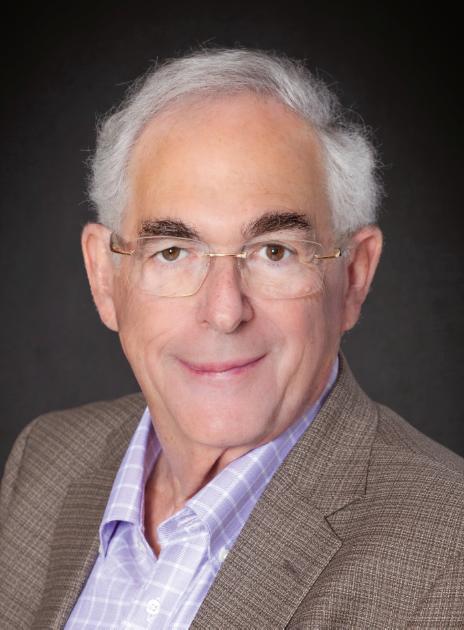

protect clients’ rights in both federal and state systems. Partnering with advocacy groups may be essential to respond to rapid changes.
Expansion of Detention Centers and Expedited Removals: Project 2025 suggests a substantial expansion of detention facilities, including tent facilities for minors, and enhanced CBP measures, including the reintroduction of horseback patrols and reduced reliance on alternatives to detention.
Client Counseling for Border Interactions: Attorneys should educate clients on their legal rights during border interactions, including the right to remain silent, the right to refuse a search without a warrant, and the importance of not signing documents without legal counsel. It is crucial to counsel clients on the importance of carrying valid identification and immigration documentation at all times to minimize risks during encounters with authorities, especially if they live near or frequently interact with border areas. Attorneys may also need to work on expediting cases where clients are at risk of prolonged detention under the new guidelines.
Project 2025 represents a significant shift in the immigration landscape, with proposed changes affecting nearly every category of immigration and enforcement. Every day there is a new policy, memo, or executive order which impacts literally everyone in the country. Even Lawful Permanent Residents are being targeted. People with legal status and permission to be in the United have been deported with no recourse or oversight. People should reconsider leaving the country and even travelling to the border (going past a check point) because they may not be able to return. It is important that even non-immigration lawyers get up to speed on the administration’s policies which are impacting
our entire country. As practitioners, the ability to adapt, communicate effectively, and provide comprehensive preemptive counsel to clients will be essential. By staying informed and prepared, attorneys can help clients navigate these challenging developments and continue to advocate for fair and equitable treatment within the legal framework.

Ruby Lichte Powers, a Board Certified Immigration Law attorney, leads Powers Law Group, P.C., a Houston-based, full-service immigration firm. With seventeen years of practice, she handles diverse immigration matters, including family—and employment—based, asylum, and deportation defense. Her expertise has been featured in major publications and has received prestigious awards, including the AILA Advocacy Award and being listed in The Best Lawyers in America and Super Lawyers. As author of Power Up Your Practice: Create the Law Firm and the Life You Deserve, she regularly consults and speaks on law practice management including via her podcast, Power Up Your Practice. She dedicates her career to empowering others and advancing the field of immigration law and law practice management.


Carrie Nguyen is the owner and managing attorney of The Law Office of Carrie Nguyen PLLC in Arlington, Texas. An immigrant herself, she founded her firm a decade ago to advocate for clients in complex immigration cases nationwide. Recognized as a Rising Star in Immigration Law by Super Lawyers, she has presented at events hosted by the American Immigration Lawyers Association, the State Bar of Texas, and the Dallas Bar Association. Her passion for immigration law and advocacy continues to drive her impactful work in immigration law.
1American Immigration Council, The H-1B Visa Program and Its Impact on the U.S. Economy (2025), https://www.americanimmigrationcouncil.org/research/h1b-visa-program-fact-sheet
2Alessandro Caiumi and Giovanni Peri, Immigration’s effect on US Wages and Employment Redux, National Bureau of Economic Research, 48 (2024), https:// www.nber.org/system/files/working_papers/w32389/ w32389.pdf.
3U.S. Customs & Immigration Servs., H-1B Cap Season (2025), https://www.uscis.gov/working-inthe-united-states/temporary-workers/h-1b-specialtyoccupations/h-1b-cap-season.
4U.S. Customs & Immigration Servs., L-1A Intracompany Transferee Executive or Manager (2024), https:// www.uscis.gov/working-in-the-united-states/temporary-workers/l-1a-intracompany-transferee-executiveor-manager
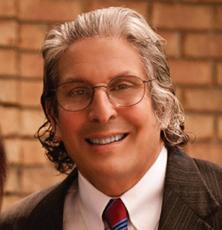
By Soledad Valenciano, Jeffrie Lewis, and Sabrina Salazar
If you are aware of a Western District of Texas order that you believe would be of interest to the local bar and should be summarized in this column, please contact Soledad Valenciano (svalenciano@svtxlaw.com, 210-787-4654) with the style and cause number of the case, and the entry date and docket number of the order.
Villareal v. Towne Park, LLC , No. SA-22CV-1008-JKP (Pulliam, J., February 27, 2025).
Plaintiff exited his vehicle on a rainy day in a hotel’s valet area and slipped on the wet payment. Following Erie, the court applied state substantive law and federal procedural law, noting two claims against the property owner were permissible in Texas - either a negligence claim, or a premises-liability claim. As the prior had already been dismissed, the court analyzed the defendant’s motion for summary judgment only as to the plaintiff’s premises liability claim. For an invitee plaintiff, the inquiry focuses on whether the defendant proximately caused the plaintiff’s injuries by failing to use ordinary care to reduce or to eliminate an unreasonable risk of harm created by a premises condition that the defendant knew or should have known about. Unless the defendant owes the plaintiff “a duty to warn of or ensure against” the asserted dangerous condition, a premises liability claim necessarily fails. The court analyzed cases addressing natural accumulation of mud, ice, and rain to hold that such naturally occurring conditions do not create conditions posing an unreasonable risk of harm. The court held that exceptions applicable to these types of conditions were inapplicable. The court disagreed that the valet area was akin to an indoor area, reasoning that while the valet area is covered by a roof, it remains exposed to rainwater, whether windblown or tracked in by vehicles, and was therefore more comparable to an outside area than an inside area fully protected from the elements.
Rodriguez v. State Farm Lloyds, No. SA-21CV-508-OLG (Garcia, O., February 26, 2025).
In this insurance coverage dispute, the defendant insurer sought summary judgment that the policy’s cosmetic loss exclusion and rust exclusion precluded coverage for much of the damage to the plaintiff’s home’s metal roof following a hail storm. The plaintiff disputed the validity and applicability of the exclusions and also argued that the defendant had failed to authenticate the exclusions. Although the plaintiff no longer remembered signing the exclusions, he had previously admitted doing so, did not expressly deny doing so, and his lack of memory did not create a genuine issue of material fact. Further, at the summary judgment stage, evidence need not be authenticated or otherwise presented in an admissible form to be considered so long as it is capable of being presented in an admissible form at trial. The court agreed that neither the roof dents nor the potential future development of rust were covered by the policy and, therefore, granted summary judgment on the plaintiff’s claims that related to roof dents. The court also granted summary judgment on the plaintiff’s statutory and common law bad faith claims because, absent the right to coverage, no relief, including treble damages, is warranted.
Francis v. Nelson, No. SA-24-CV-01130JKP (Pulliam, J., February 24, 2025).
During her lifetime, Lucia Capacchione created a series of therapeutic methods, published twenty books and authored twenty-five registered copyrighted works. Following her death, Capacchione’s daughters sued her as-
sistant and Project Insight for allegedly misappropriating Capacchione’s image and name for personal profit. The plaintiffs moved for summary judgment on the liability portion of their claims for statutory violations of the Texas Property Code and the California Civil Code. To be entitled to summary judgment on these causes of action, the plaintiffs were required to plead and prove that the defendants lacked consent or authorization as a matter of law. Not having addressed the issue of consent or authorization under these statutory claims, summary judgment was not appropriate. Even assuming the plaintiffs satisfied their summary judgment burden, the defendants created a genuine issue of material fact as to consent by presenting a declaration from the assistant detailing Capacchione and her joint efforts to create the program at issue, excerpts from the original training manual for the program, an album Capacchione gave the assistant as a birthday gift, and a letter form Capacchione to the assistant gifting Capacchione’s portion of the program to Project Insight.
Sweeney v. Hoy Health LLC, No. SA-22-CV323-XR (HJB) (Bemporad, H., May 16, 2024); adopted by Sweeney v. Hoy Health LLC, No. SA-22-CV-00323-XR (Rodriguez, X., June 27, 2024).
This case, which was originally filed in state court, arose from a transaction in which the defendants acquired a company previously controlled by the plaintiff. The plaintiff had raised over $10 million for the company at issue, HomeFront Healthcare (HFH), and personally invested approximately $800,000. In 2021, investors and stockholders of HFH, including
the plaintiff closed a transaction with the defendants in which the defendants gained control over HFH, the investor cash raised by the plaintiff, and the plaintiff’s seat on the board of HFH; and the defendants promised to hire the plaintiff as Chief Strategy Officer with a $300,000 annual salary, and provide him with a certain number of vested shares of stock if he could raise a certain amount of money within 24 months. The plaintiff alleged that the defendants entered this agreement with a plan to fire him within the first month, which would damage his reputation such that he would not be able to raise the money required to obtain the vested shares of HFH stock. The plaintiff sued, alleging causes of action for fraudulent misrepresentation and conspiracy. The defendants removed to federal court without first filing an answer. The defendants then filed a motion to dismiss; the plaintiff amended his complaint; the defendants filed a second motion to dismiss, which was granted; and the plaintiff filed a second amended complaint. The defendants filed two motions to extend time to answer, both of which were granted. The defendants then filed a third motion for extension, but—
before any answer was filed—defense counsel withdrew, and the defendants failed to obtain new counsel or file an answer. The plaintiff sought a default judgment as to his claim for fraudulent misrepresentation, which the court granted. The plaintiff withdrew his conspiracy claim so the court dismissed that claim without prejudice. Though a plaintiff’s allegations are deemed admitted by a defendant upon default, the same does not apply to damages. The burden remained on the plaintiff to provide evidentiary support—such as affidavits and declarations—for the damages sought. When damages claimed are mathematically calculable, a court has discretion to determine damages with or without an evidentiary hearing. Damages are capable of mathematic calculation when they “can be computed with certainty by reference to the pleadings and supporting documents.” A default judgment may not exceed the relief sought in the plaintiff’s complaint.
Here, the plaintiff sought benefit-of-the-bargain damages, costs, and pre- and post-judgment interest. Benefit-of-the-bargain damages subtract the value received from the value as represented, and involve a “reasonable certainty” burden of
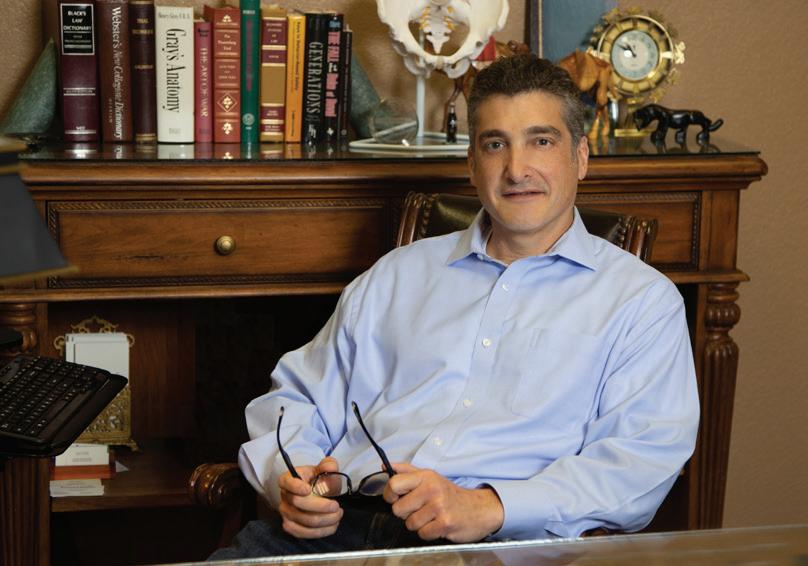
proof. The plaintiff submitted affidavit and documentary evidence sufficient to meet this burden, resulting in $2,688,041.33 in benefit-ofthe-bargain damages. The plaintiff was awarded costs pursuant to Fed. R. Civ. P. 54(d)(1) as the prevailing party in a civil action. The court also found that the plaintiff was entitled to pre-judgment interest under the Texas Finance Code, and that an award of post-judgment interest was mandatory under 28 U.S.C. § 1961.
Slavit v. Peripheral Vascular Assocs., P.A., SA-22-CV-1194-OLG (HJB) (Bemporad, H., March 15, 2024); adopted by Slavit v. Peripheral Vascular Assocs., P.A., SA-22-CV01194-OLG (Garcia, O., April 30, 2024).
The plaintiff, proceeding pro se, sued his employer, Peripheral Vascular Associates, P.A. (PVA) for discrimination and retaliation under the Americans with Disabilities Act due to PVA’s COVID-19 policy for employees. The defendant had hired the plaintiff in the summer of 2020, one month after the defendant enacted a COVID-19 Exposure Policy for all employees. This COVID-19 Exposure Policy—provided to the plaintiff during onboarding—warned that failure to adhere to company policy would result in disciplinary action, up to and including termination. Nonetheless, the plaintiff objected to and often disregarded the COVID-19 Exposure Policy, citing religious and medical reasons, but failed to provide documentation to support an exemption for either. The ADA, which prohibits an employer from discriminating against a qualified employee because of a disability, requires a disability to fall into one of three categories: “(A) a physical or mental impairment that substantially limits one or more major life activities; (B) a record of such impairment; or (C) being regarded as having such an impairment whether or not the impairment limits or is perceived to limit a major life activity.” 42 U.S.C. § 12102(1)(A)-(C);(3)(A). The plaintiff claimed that his employer regarded him as disabled because, under its COVID-19 policy, which “assumed that ‘unvaccinated’ employees who did not have a medical or religious exemption…were impaired by a contagious disease,” he was perceived as disabled. The plaintiff also argued that the defendant “made a record of disability” because it classified him as unvaccinated, “needing to wear a mask, isolate, and get vaccinated.” The defendant moved for summary judgment because, among other reasons,
the plaintiff was not disabled for purposes of the ADA. First, the defendant argued that, as a matter of law, a company-wide COVID-19 policy is insufficient proof of the company regarding an employee as disabled under the ADA. Second, the defendant argued that documentation of the plaintiff’s vaccination status did not constitute a record of disability. The defendant further argued that because its COVID-19 policy, including the consequences of non-compliance, existed prior to any of the plaintiff’s alleged protected activity, his retaliation claim also failed. The court found that because the plaintiff’s only evidence that the defendant regarded him as disabled was the COVID-19 policy, itself, there was no genuine dispute as to whether or not he was “subjected to an activity prohibited by the ADA because of [a]…perceived impairment[.]” The court concluded that, because vaccination status does not pose a substantial limitation to any major life activity, the defendant’s record of the plaintiff’s vaccination status did not qualify as a record of disability for purposes of the ADA. On these grounds, the court granted the defendant’s motion for summary judgment.
